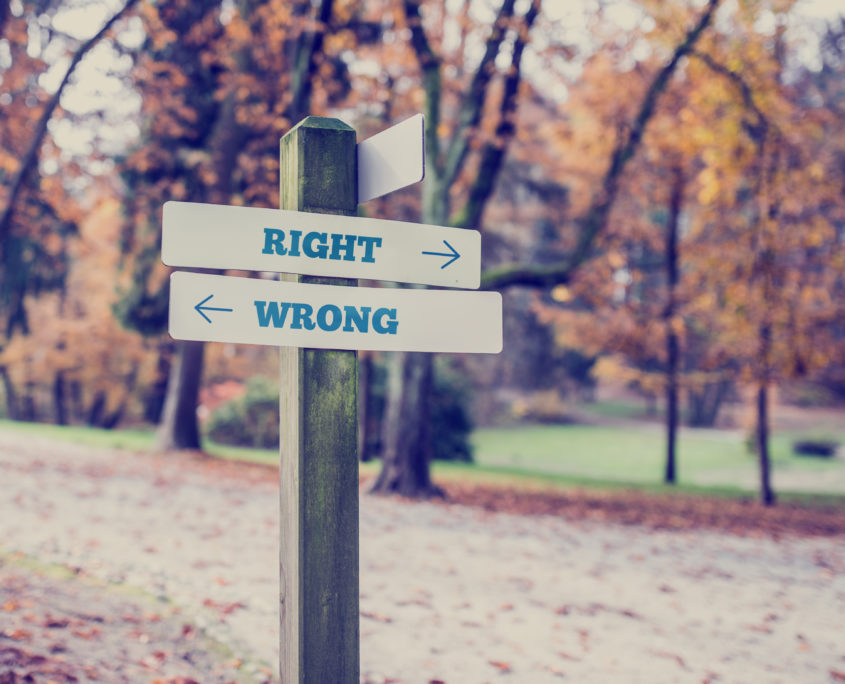Diabesity: These 5 Diets Make the Problem Worse

Diabesity, a term that refers to the combined adverse health effects of diabetes and obesity, is a serious global health threat. According to the Centers for Disease Control, 90 percent of those who are obese will develop type 2 diabetes, so experts and government officials have tried creating diets and exercise programs designed to end this epidemic.
How did that work? Not at all for most people. One study estimates that 45 million Americans go on a diet each year, and another one says that diets fail 95.4 percent of the time. Dieting is a multi-billion dollar industry, selling products and programs that don’t work for most people most of the time.
How about you?
You know diets won’t help with diabesity!
If you’ve been battling your weight for decades, you’re probably ready to give up. No matter what you’ve tried – the Grapefruit Diet, starvation diets, the Cabbage Soup diet, Weight Watchers, Jenny Craig – it didn’t work for long. The 20, 40, 60, or (gulp!) 100 pounds you tried so hard to lose came back with a vengeance, and it brought an extra 20 pounds with it. All your efforts were wasted. Your self-esteem? Forget it!
Diets and diabesity: There is SANEity and hope for you
Well, there is hope for you. But it won’t come through starvation diets, fad diets, or any conventional diet plans. Those diets follow the calorie myth that has made your problem worse. To safely and easily lose weight –and stop that agonizing yo-yo dieting — you need to learn the truth about obesity and diabesity.
The most important truth is this: obesity is a disease.
You are NOT at fault. Your hormones are dysregulated (a medical term meaning “not regulated) and they are sending incorrect messages to your metabolism. It has nothing to do with your willpower or lack thereof. It has nothing to do with gluttony or laziness or any other insulting term. It’s a disease that is not your fault but one you can correct once you know the proper steps to take.
But before you do that, there are a few things you need to know about diabesity and about five diets that make the problem worse.
Diabesity: a deadly threat to humanity
The combination of diabetes and obesity (diabesity) is now a global epidemic. Obesity is the main risk factor for type 2 diabetes, and both of these diseases stem from the same cause – insulin resistance. It is clear that obesity is spurring the increased rate of type 2 diabetes.
Below are some sobering obesity, diabetes, and diabesity statistics.
In 1980, there were 857 million overweight and obese people globally. In 2013, that number had grown to 2.1 billion. More than 422 million people globally suffer from diabetes. In America, 50 percent of those over 65 have diabesity.
Are diets fueling the rising diabesity rates?
There are many factors that caused the diabesity rates, and it all started with dietary habits and obesity.
Though fast-food restaurants have been around since the 1950s (some even earlier), their numbers have more than doubled since 1970. Fast food restaurants are convenient places to grab a quick bite to eat, along with super-sized servings of carbs and sugary sodas guaranteed to shoot your blood sugar sky high. If you eat a diet like this regularly, as many people do, it will also elevate your setpoint, making weight gain and diabesity inevitable.
Meanwhile, the National Health and Nutrition Examination Survey found that 40 percent of the total daily calories of 2-18-year-olds in the United States came from sugars and solid fats. Half of these calories were from the following sources:
- Fruit drinks
- Pizza
- Soda
- Dairy desserts
- Grain desserts
- Whole milk
Though the survey describes these as “empty calories,” they are far from harmless. The foods and beverages listed above all contain high amounts of either carbs or sugar. They cause sudden, steep rises in your blood sugar, which then triggers a release of insulin — repeatedly. This contributes to the diabesity epidemic. Children are consuming these products in record amounts and in record numbers. If this doesn’t stop, the current diabesity epidemic is just a drop in the bucket compared to what is to come.
Weight loss diets are factors, too
There is no doubt that yo-yo diets contribute to the diabesity epidemic. With statistics showing the massive numbers of people who try diets each year – and fail – there has to be a reason diets have not worked for them.
There is a reason, one that also explains the yo-yo effect. It’s called dieting. Cutting calories does not work for long-term weight loss; in fact, it does just the opposite. It awakens your body’s self-protective mechanism, the thermostat-like metabolism, which switches into overdrive to make sure you stay close to your setpoint weight.
It does this by slowing your metabolism, which accounts for the eventually excruciatingly slow weight loss and for the frequent plateaus. Once you go off the diet and start eating regular meals again, you’ll start gaining weight again. In an amazingly short period, you’ll gain all the weight back, but that’s not all. To further protect you from possible future starvations, it ups your setpoint weight and gives you another 10 or 20 pounds.
It’s not difficult to see how yo-yo dieting can lead to bigger and bigger weight gains over time. Diets are not the way to go, and although reduced-calorie diets are bad, here are five diets that are particularly bad. These diets make your weight problem worse.
1. Low-Fat Diets
Dietary fat has gotten a bad rap in the past few decades. During the 1950s and 1960s, doctors were fretting about cardiovascular diseases. Quite a few studies had implicated sugar as being a risk factor for heart disease, but the sugar industry wouldn’t stand for that. They sent their Sugar Research Foundation (now the Sugar Foundation) out to dig up research that exonerated sugar’s role in heart disease. Those same studies, not surprisingly, pointed an accusatory finger at saturated fat.
The Sugar Research Foundation then hired three Harvard researchers to conduct a review of those studies. The article was published in the prestigious New England Journal of Medicine, and all of a sudden, saturated fat was the cause of cardiovascular disease – period.
The media joined in the no-fat, low-fat chorus, and in 1980, the government established its Dietary Guidelines for Americans, advising Americans to “avoid too much fat, saturated fat, and cholesterol.” Since then, the dietary policy has reiterated the goal of reducing total fat to no more than 30 percent of your daily calories, making people think that’s a good thing.
That’s a bad thing, a very bad thing.
Fat is one of the necessary macronutrients. You need it to live and to maintain your health. It’s needed to absorb certain nutrients, and it also controls hormones, especially insulin, which keeps blood sugar levels down. Eating fat, especially whole-food fats, makes you feel full, which keeps you from overeating. Studies have also shown eating fat turns on your fat-burning switch by impacting ghrelin levels.
The Dietary Guidelines for Americans and the subsequent official dietary policies set by the government are probably the biggest cause of the diabesity epidemic. After these guidelines were published, people tried to follow them. Everywhere they looked, no-fat, low-fat products filled supermarket shelves. Soon, it wasn’t just about cardiovascular health, the marketing targeted obesity and weight loss.
People went on low-fat diets in droves. They gained weight and got sick. They developed type 2 diabetes and now – diabesity.
If you eat a low-fat diet, you must eat a high-carb diet because fat and protein tend to travel together. Carbs like pasta, grains, cereal, etc. spike blood sugar and raise your setpoint weight, which causes obesity and ultimately diabesity.
2. Weight Watchers
Weight Watchers was founded by Jean Nidetch, a homemaker who had struggled with her weight. It started in the 1960s when she created a support group, inviting the members to meet in her home once a week. Nidetch had no education or training in nutrition, physiology, or anything that qualified her to give dieting advice to anyone.
Yet, Weight Watchers is one of the biggest diets out there, even though Nidetch sold it to the H.J. Heinz Company in 1978 – yes, the ketchup-loaded-with-high-fructose-corn-syrup company! There is so much wrong with Weight Watchers it’s hard to know where to start.
First, the Weight Watchers organization doesn’t distinguish between SANE (high-quality) and inSANE(low-quality) foods. As long as it’s within your allotted points, it’s fine. Studies have shown that eating low-quality foods such as starches raises setpoint weight, so diets that allow every type of food without giving you the truth about what it will do to your weight loss goals is irresponsible at best and just plain evil at worst.
Second, the point system itself is awful. What it really says is, “Starve now, so you can eat junk later.” This gives you a double-dieting whammy: starvation raises your setpoint weight, and so does junk food. Studies have shown that when people cut calories, their metabolisms slow down. This is the body’s way of keeping you at your setpoint weight. If you do manage to lose weight, you’ll gain it all back as soon as you start eating normally again, plus a few more pounds as extra insurance against future starvation.
But Weight Watchers will help you watch your weight……go up and down and up and down.

3. Nutrisystem
Nutrisystem does more harm than good, too. If you sign up for Nutrisystem, you mostly eat just what you get through the mail. Oh, you do have to buy some inSANE items to go with your meals, such as bread and milk. But suppose you do lose weight. Are you supposed to eat food you receive in the mail for the rest of your life?
The foods Nutrisystem sends you are processed. Dinners are in microwavable containers. Processed and packaged food are loaded with chemicals, pesticides, sugars, and many more. Nutrisystem probably costs more than just buying SANE foods at your local supermarket too.
4. SlimFast Diet
“Give us a week; we’ll take off the weight,” was the popular slogan for SlimFast diet shakes. That might be true, but you won’t keep it off.
Having just two SlimFast shakes a day with a “healthy” meal, as the old commercials advocated, didn’t quite work out that way. If you have just two shakes during the day, you’ll probably be starving by dinner time and likely to overeat. It will also slow your metabolism, not the best thing to do if you want to lose weight!
One 11 oz. bottle of the original SlimFast has 19 grams of sugar; that’s 4.6 teaspoons! Research has shown that sugar raises the setpoint even if you stay within your caloric range. It also causes inflammation and food addiction.
The new SlimFast has 1 gram of sugar per bottle, only a quarter teaspoon. If you think that’s better, think again. Read the bottom of the label, and you’ll see the words, “sweetened with a non-nutritive sweetener.” Do you know what that means? Non-nutritive sweeteners are artificial sweeteners, which despite having no calories, do raise your setpoint weight and do cause weight gain. They are also bad for your health in other ways.
Compare that to the energy-boosting, setpoint-lowering, all-natural SANE Peanut Butter Instant Energy Bites, Vanilla Cashew Meal Bars, and other products in the SANE store.
5. The Food Pyramid (now My Plate) Diet
Okay, though not a true diet in the sense of a diet product, hundreds of millions of Americans still follow the Food Pyramid recommendations, even if subconsciously.
The original Food Pyramid recommended Americans eat 6-11 servings of starch per day and use fats, oils, and sweets sparingly. (At least they got the sweets part right.) The vegetable group merited only 3-5 servings a day. Americans followed these guidelines for decades, adjusting their diets accordingly, and the diabetes epidemic is the result.
Next step: Prevent diabesity by avoiding bad diets with SANE
There is much more to the SANE lifestyle. Getting 7-8 hours of sleep a night, reducing stress, staying hydrated, and performing eccentric exercises are other important factors in lowering your setpoint.
Ready to finally break free from the yo-yo dieting rollercoaster that can lead to diabesity? By balancing your hormones and lowering your body’s set-point weight, SANE is the solution you’ve been dreaming of.
Want to know the exact foods and serving sizes scientifically proven by over 1,300 peer-reviewed research studies to boost metabolism, burn fat, and enjoy virtually effortless weight loss like a naturally thin person?
Begin your exciting journey to lasting, healthy weight loss today. Download the free SANE metabolism boosting food list, cheat sheet, and “Eat More, Burn More” weight loss program by .





